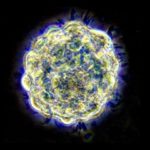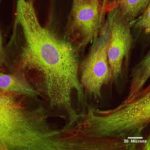The Basics: What Are Stem Cells, How Do They Work and What Can They Do?


Stem Cells are “unspecified” master cells that have the power to become the various specialized cells that make up the organs and tissues of our bodies. There are two basic types.
Embryonic Stem Cells are produced by the embryo at a very early stage (4-5 days post fertilization) and can differentiate into bones, muscle, heart, liver, brain and so forth. These are called ‘pluripotent’ stem cells, because they can become any of the tissues or organs in humans.
Adult Stem Cells are found in the tissues and organs of mature humans, and serve as a sort of internal repair system that can fix or replace damaged tissue. They are called ‘multipotent’ stem cells because they can only give rise to certain types of new cells.
All stem cells share certain characteristics. The first is their ability to renew themselves through cell division. The second is their ability to become tissue- and organ-specific cells. Frequently stem cells perform both function, dividing into a replacement stem cell and a second cell that differentiates. In some organs, such as in the gut and the bone marrow, stem cells frequently divide in order to repair and replace old tissue. In some organs, such as the liver or the heart, they divide only under special conditions.
Because of their potential to become new tissue and organs, and repair or replace those that are damaged, stem cells are the subject of much excitement in the medical world today. Numerous studies and growing clinical evidence indicate that adult stem cells can be used for a variety of cosmetic procedures and medical problems. Much research is underway in the U.S. and across the world to determine how and why stem cells work, while at the same time thousands of private physicians are experimenting with stem cells to test their efficacy with patients.
The science of stem cells is still in its infancy, however. It was only in 1981 that scientists discovered how to derive stem cells from early mouse embryos, and only in 1998 that they learned how to derive stem cells from human embryos. It was only in that same year that scientists discovered adult stem cells in human fat, opening up whole new vistas of easy access and opportunity.
